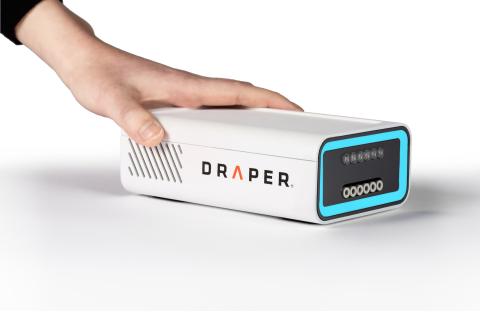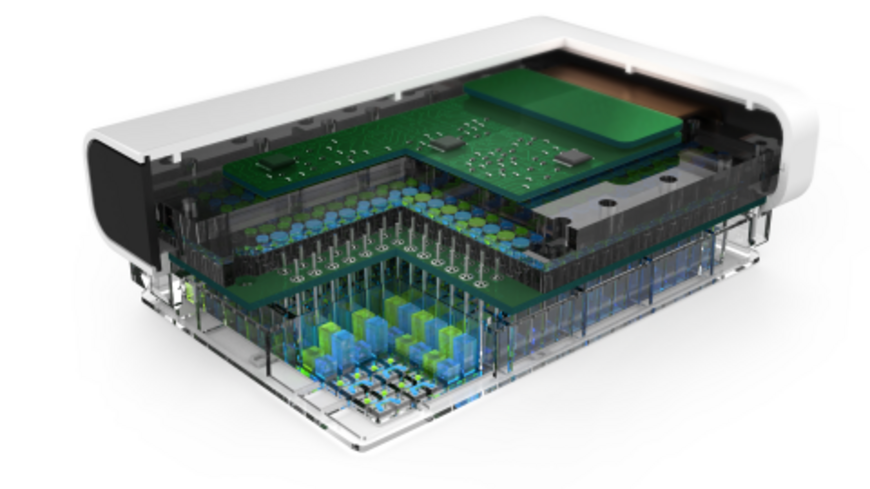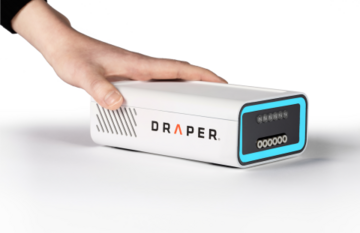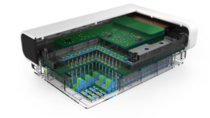New Research by Draper and Pfizer Demonstrates Colon-on-Chip Tissue Models
CAMBRIDGE, Mass.—Science is stalled in its efforts to develop more effective treatments for inflammatory bowel disease (IBD), in part because most treatments focus on reducing inflammation but ignore the importance of repairing the bowel’s epithelial barrier. Now, new research suggests that science might want to pursue a mix of both strategies in addressing IBD—restore the intestinal barrier to a healthy state and reduce inflammation. Patients could see improved outcomes and reach higher treatment response rates.
IBD, which includes both ulcerative colitis and Crohn’s disease, is increasing around the world, with an incidence rate of 4.9M cases worldwide. Contributing causes include genetic predisposition, environmental toxicity and an imbalance in a person’s microbiome. Common symptoms include diarrhea, rectal bleeding, anemia, abdominal pain and malnutrition.
In IBD drug discovery, most treatment strategies target immune cells and inflammation of the bowel. However, another key element is frequently overlooked: the epithelial barrier that lines the intestinal tract, which provides protection from the intestine contents. When the barrier breaks down, through irritation from intestine contents or from a disease condition, the immune system is activated. The result is a continuous recurrence of inflammation. “We call it a positive feedback loop,” says Elizabeth Wiellette, Ph.D., of Draper. “Even as inflammation is suppressed, the cycle can re-initiate if the epithelial barrier remains damaged, leading to sub-effective treatments.”
Wiellette is a biologist and co-author of a paper published in the prestigious journal Nature Scientific Reports. A research team from Draper and Pfizer experimented using human organ tissues-on-a-chip. The team seeded, grew and tested human colon epithelial tissue models in Draper’s PREDICT96 high-throughput microfluidic testing platform.
Among the findings, Wiellette and her colleagues demonstrated that Draper’s microfluidic device can be used to reconstruct human colon epithelial physiology and function at the cellular and tissue level and quantify dynamic drug-interaction with bowel tissue in real time. The platform showed it has the potential to screen new drugs for therapeutic effect without the need for animal models, elucidate the mechanism of action on barrier cells and be scaled to provide pre-clinical studies with ample statistical power.
The PREDICT96 colon model combines primary human colon cells and a high-throughput framework with integrated pumping and trans-epithelial electrical resistance (TEER) measurements that make it one of the first systems to efficiently and sensitively assess permeability across multiple donors and many dose treatments. Researchers studied physiologically relevant human intestinal biology in a modality that can support the bandwidth required for applications such as therapeutic and small molecule screening.
“A potential reason that current treatments have significant non-response or loss-of-response could be their focus on suppressing inflammatory response but failure to heal the epithelial barrier,” the authors said. Treatments that target inflammation directly but fail to heal the intestinal barrier may fail to thoroughly suppress the disease state, they said.
Unlike most microfluidic testing platforms that have fewer than a dozen replicates, Draper’s platform can hold 96 individual organ tissue models in one microfluidic culture plate. A key feature is a culture plate lid that provides integrated pumping and sensing, including 192 individual and actively-controlled micropumps and 384 individually addressable electrodes configured to make electrical measurements within each of the 96 tissue models.
In the paper, the authors point out that competing intestine-on-chip platforms are highly specialized and typically support only single or small replicate numbers, rendering them less useful for studies that benefit from high throughput capacity, such as drug discovery.
The paper was co-written by Elizabeth Marr, Thomas Mulhern, Michaela Welch, Philip Keegan, Hesham Azizgolshani, Joseph Charest and Timothy Petrie of Draper; and Marion Kasaian, Celia Caballero‑Franco and Bryce Johnson of Pfizer.
Draper has modeled intestine, liver, kidney, lung and other organs and has partnered with a pharmaceutical company and consumer products company to manufacture configurations of its PREDICT-96 human organ system. Draper also has collaborated with a university to link organ chips together to predict the effects of potentially toxic chemicals and drugs on the human reproductive system.
Released October 2, 2023







